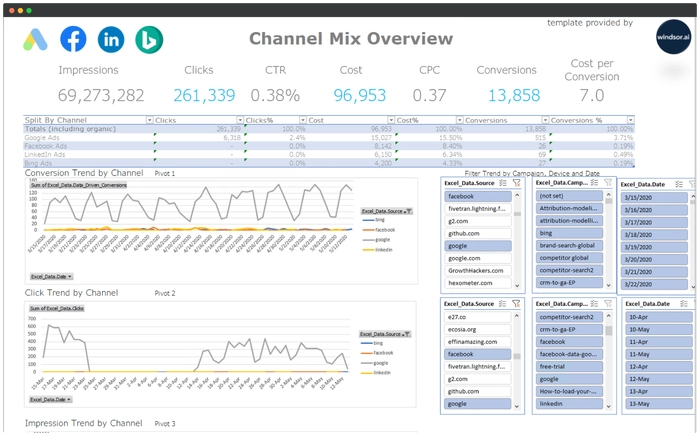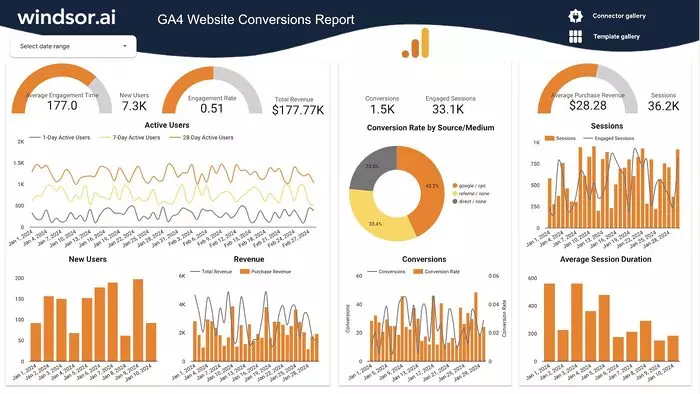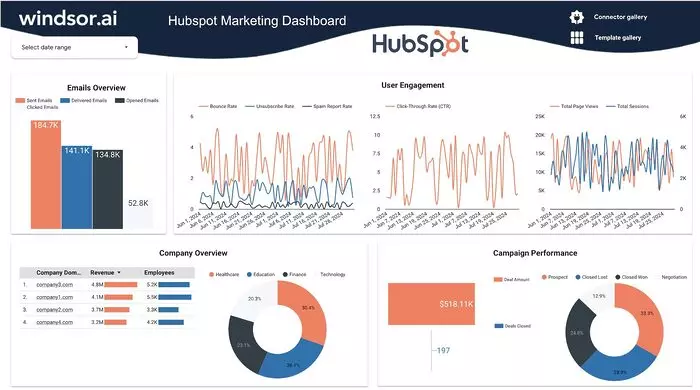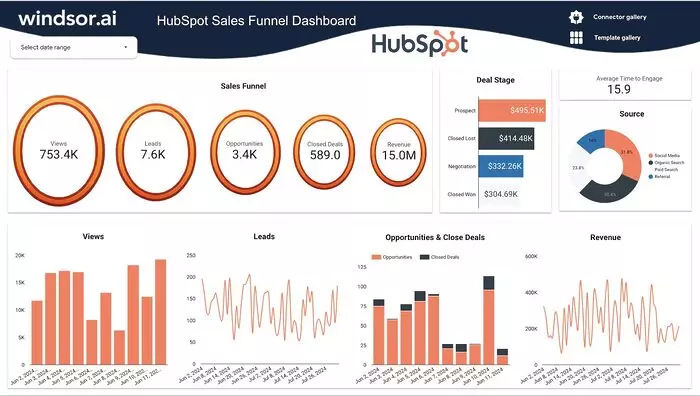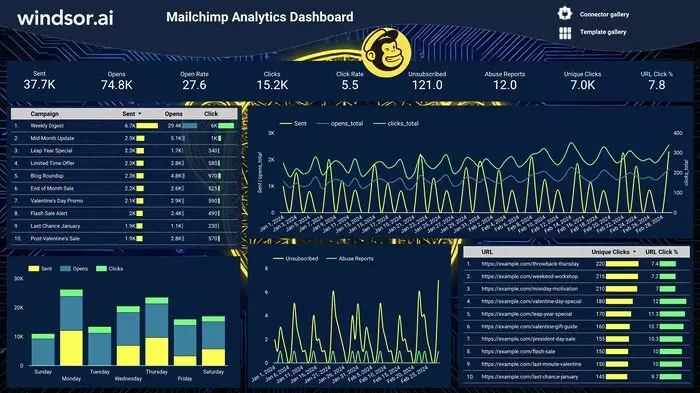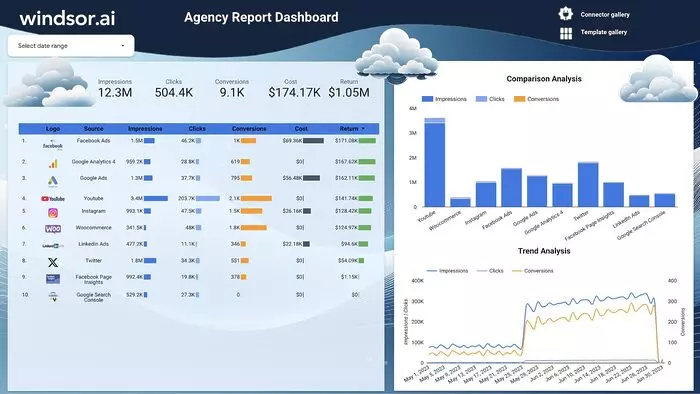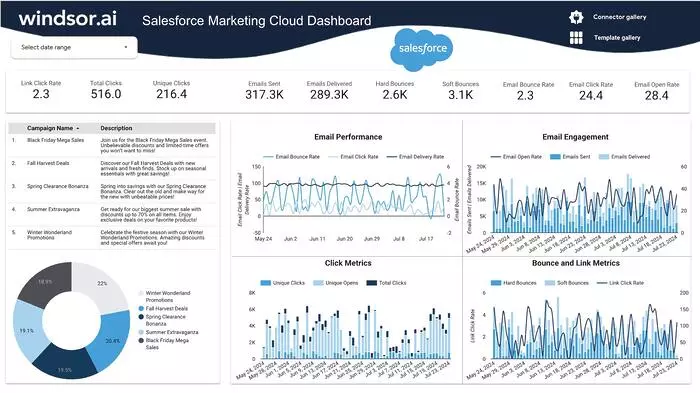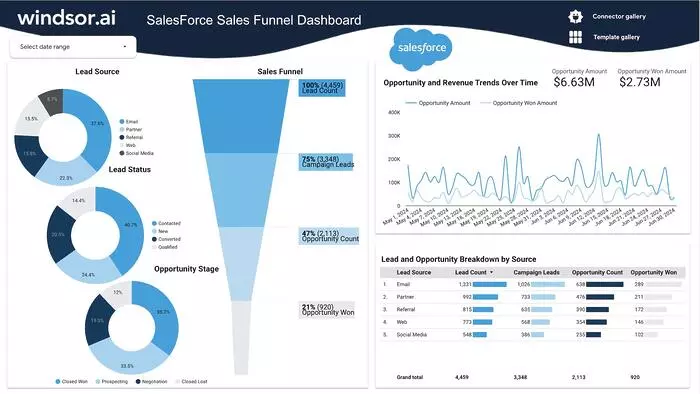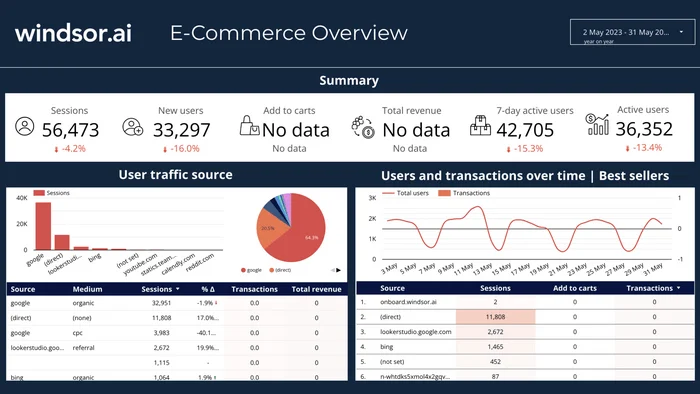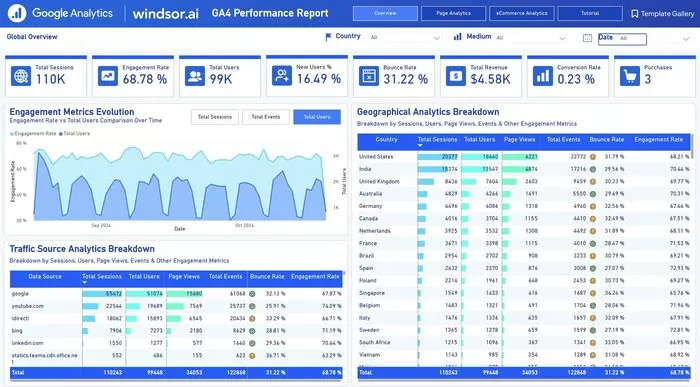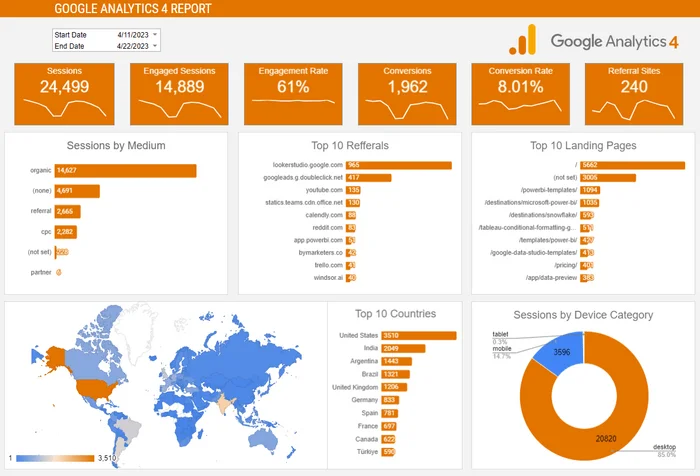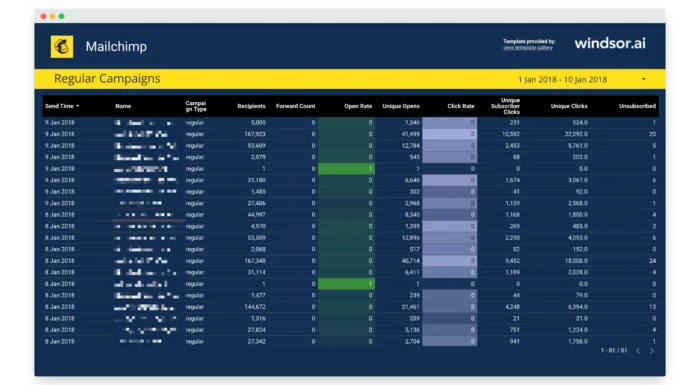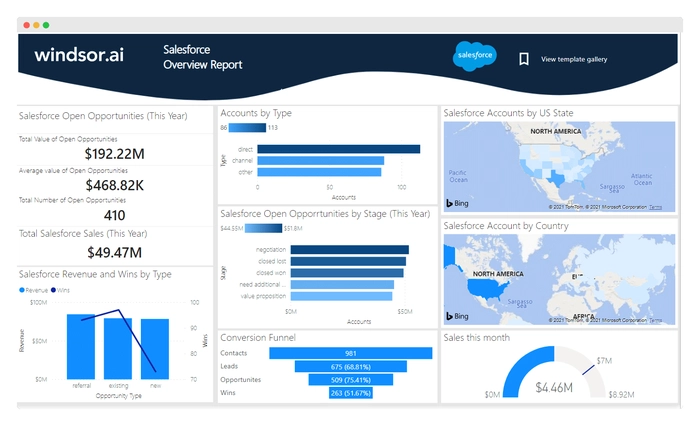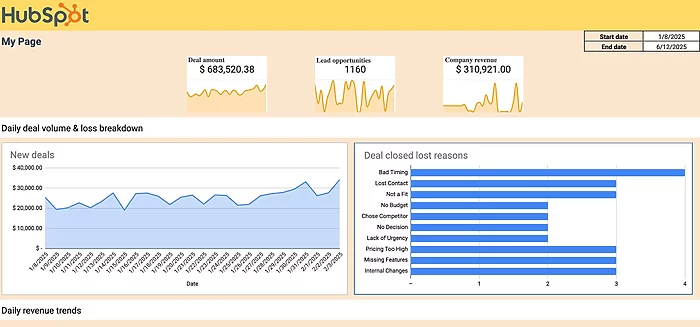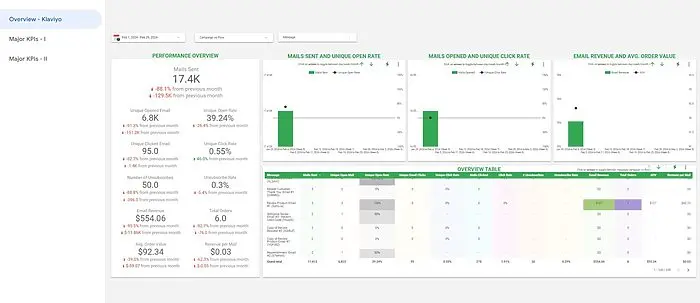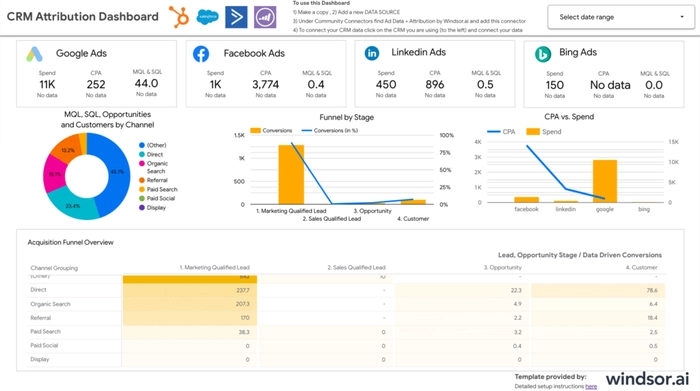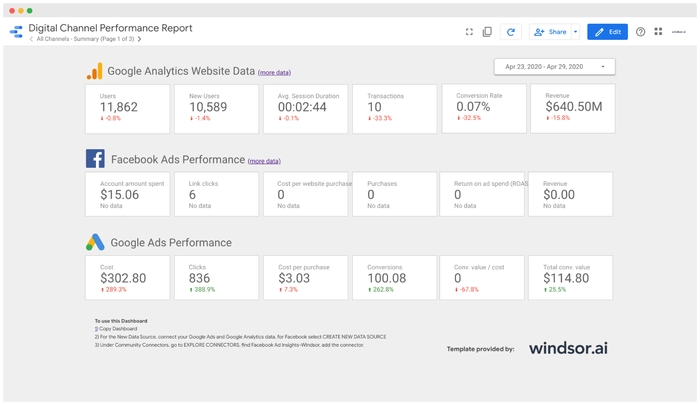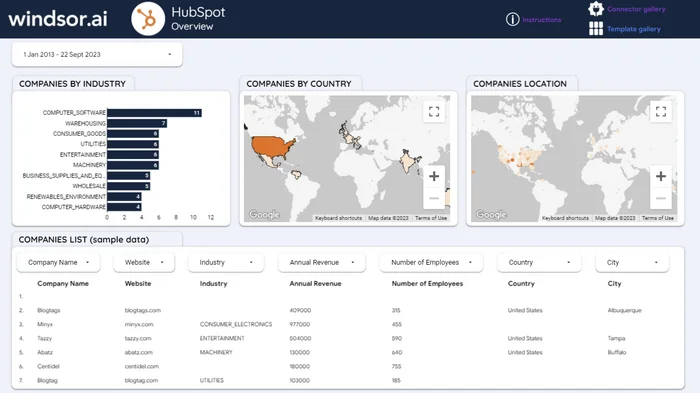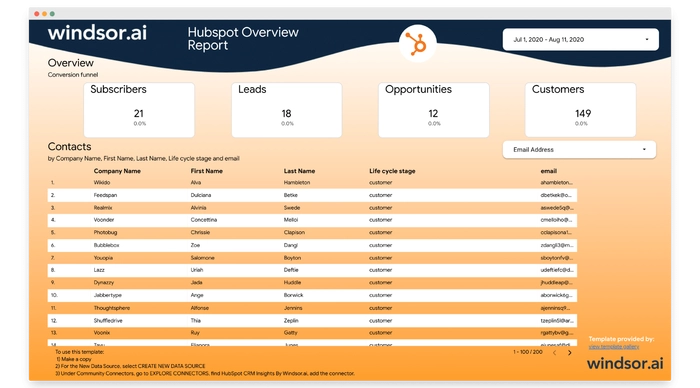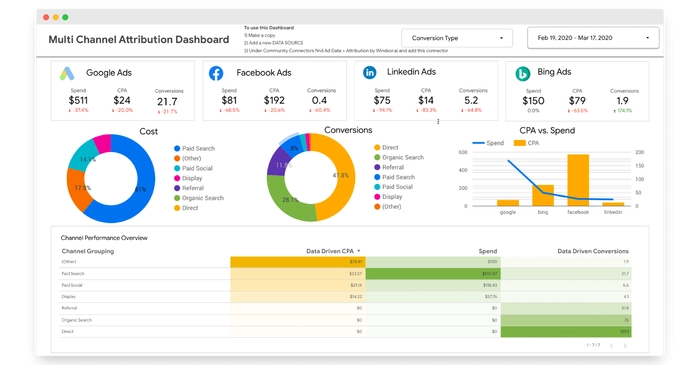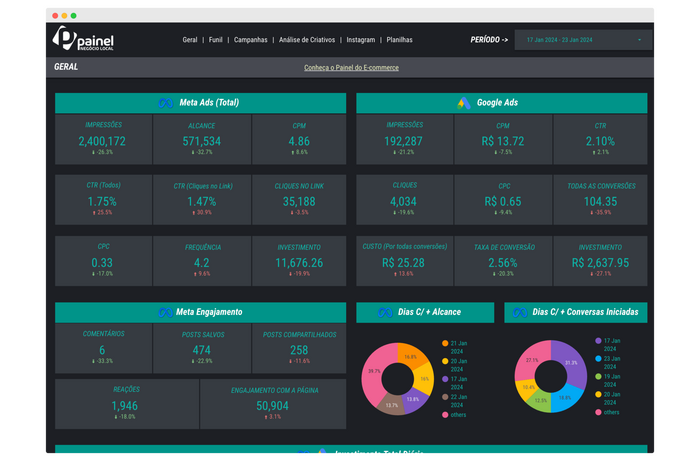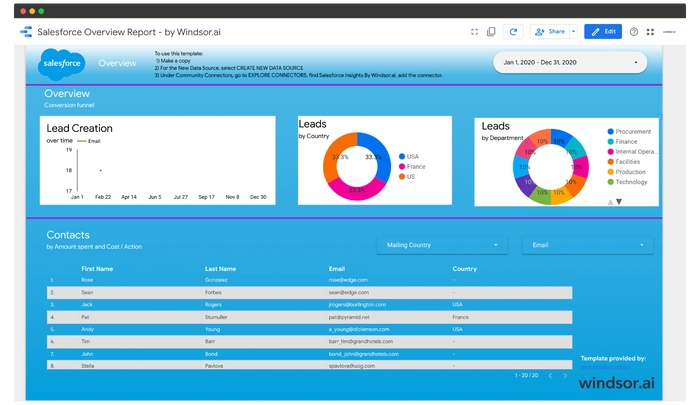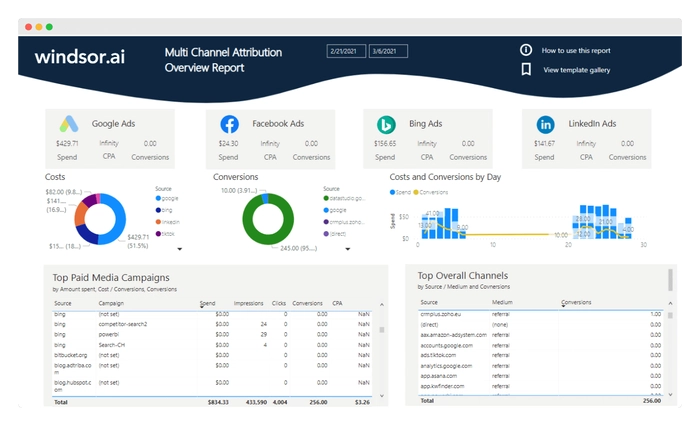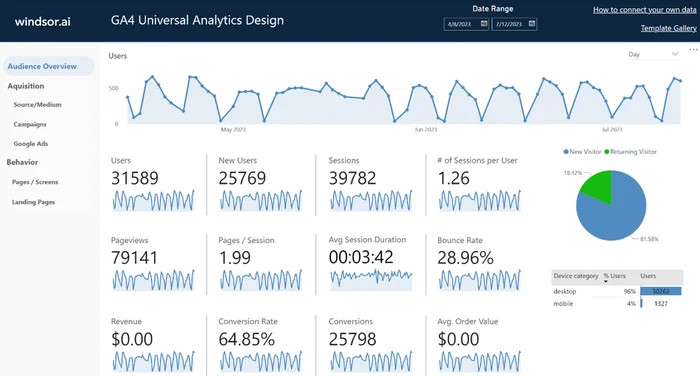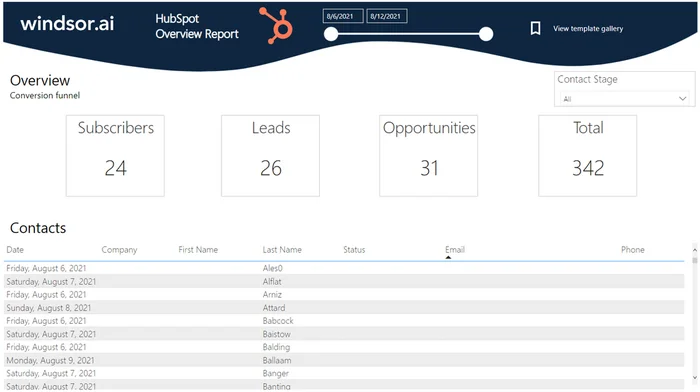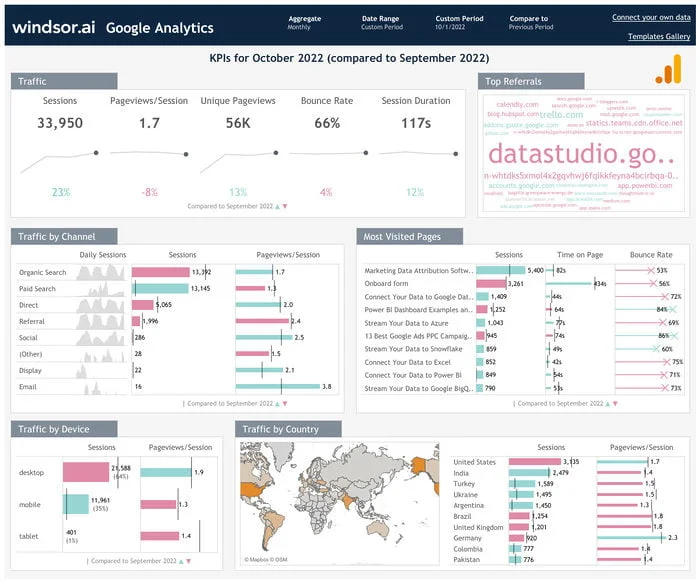Email Marketing Report Templates
If you run marketing campaigns by email, Windsor.ai email marketing report templates and dashboards can help you build your reports quickly. The marketing report templates are easy to use. You only follow a few steps to integrate your email marketing data with the templates. The express dashboard automatically visualizes your data’s critical metrics upon data integration. You can customize the dashboards by dragging graph widgets on the screen. The realtime dashboards track your key performance indicators to provide at-a-glance insights about
What is an Email Marketing Dashboard?
An email marketing dashboard is an automated reporting tool designed to capture data from email marketing campaigns. The dashboard comprises carefully selected graphs and tables that visualize key performance metrics of your marketing campaigns. The email marketing dashboards aim to simplify how you analyze and report the effectiveness of your digital marketing strategy. The dashboard also allows your entity to monitor the marketing campaigns in real time actively. During monitoring, you can take corrective actions if the digital marketing campaigns are not performing consistently with the goals and objectives of the organization. Here are some of the key components and functionalities of an Email Marketing Dashboard:
Overall Campaign Performance
The dashboard provides an overview of the performance of all email campaigns collectively. This includes metrics like open rates, click-through rates, conversion rates, and more.
Individual Campaign Metrics
It displays detailed information for each specific email campaign. This may include metrics such as open rates, click-through rates, bounce rates, and conversion rates for each campaign.
Engagement Rates:
The dashboard tracks engagement metrics like opens, clicks, and conversions. It allows marketers to see how their audience is interacting with the emails.
Delivery Metrics
It provides insights into the delivery aspect of email campaigns, including metrics like delivery rates, bounce rates, and spam complaints. This helps ensure emails are reaching the intended recipients.
Subscriber Growth and Churn
The dashboard may include information about the growth of the email subscriber list as well as any unsubscribes or churn rate.
Conversion Metrics
It tracks actions taken by recipients after interacting with the email, such as making a purchase, signing up for a webinar, or downloading a resource.
Trends Over Time
The dashboard allows marketers to track how key metrics are trending over time. This helps in understanding long-term performance and identifying patterns.
Segmentation and Audience Insights:
Some dashboards offer the ability to segment the audience based on various criteria and track performance within each segment. This helps tailor future campaigns to specific demographics or behaviors.
ROI and Revenue Attribution:
Advanced email marketing dashboards may integrate with other systems (e.g., CRM, e-commerce platforms) to track revenue generated from email campaigns and calculate return on investment (ROI).
Why should marketing agencies use Email report templates?
Marketing agencies can save time by generating email marketing reports for multiple clients and reducing the time spent on insights. The marketing email templates also increase productivity by automating marketing reporting. Here are other benefits of using marketing email report templates:
Free Email marketing templates
The email marketing reporting dashboards and templates are free. That means you are not charged any money to access the templates. Using the free marketing email templates saves the costs of producing reports.
Customizable dashboards and templates
The marketing email dashboard templates are customizable to suit the needs of your marketing reporting. Marketing agencies can build unique reports for each client without starting from scratch.
Automated marketing reports
The marketing reporting templates automate the reporting of data from your email marketing campaigns. To automate the reports, use a data connector to integrate the email marketing reports with your data accounts. The reports will refresh automatically based on the schedule you set for data updates, or you can click the refresh button to capture new data at any time.
What key metrics would be included in the email marketing dashboard?
The email marketing dashboard lets you report on all metrics your specific email supports.
- Clickthrough Rate
- Click to open rate
- List Growth Rate
- Conversion Rate
- Bounce Rate
- Open Rate
- Email Sharing/Forwarding Rate
- Overall ROI
- Unsubscribe rate
FAQs
What is email marketing?
Email marketing is a digital marketing technique that uses email messaging to make new and existing customers aware of a brand, products, discounts, and offers by a business. Email marketing involves sending promotional and informational emails to potential and existing customers. Businesses that use email marketing may send hundreds of emails per day. They are then required to analyze data from the email marketing campaign to determine whether the strategy achieves its intended goals.
How does email marketing work?
Email marketing works by sending many emails to customers. The marketer begins by creating a mailing list and then sends targeted messages. The emails generate engagement between the sender and the receiver. For that reason, the business needs to study various performance metrics, including the rate of email delivery, the proportion of emails that are opened, and the rate of responses to emails, which are engagement indicators. The business can then analyze email responses based on whether they generate sales leads or result in conversions. Marketers must constantly review email marketing techniques to avoid sending mail to spam accounts and improve the attainment of marketing goals.
When is the best time to send a marketing email?
The best times to send a marketing email are in the morning and early afternoon. Recipients are most likely to open emails in the morning or during breaks from work. Most users are likely to read emails between 9 a.m. and 11 a.m. and between 1 p.m. and 3 p.m.
